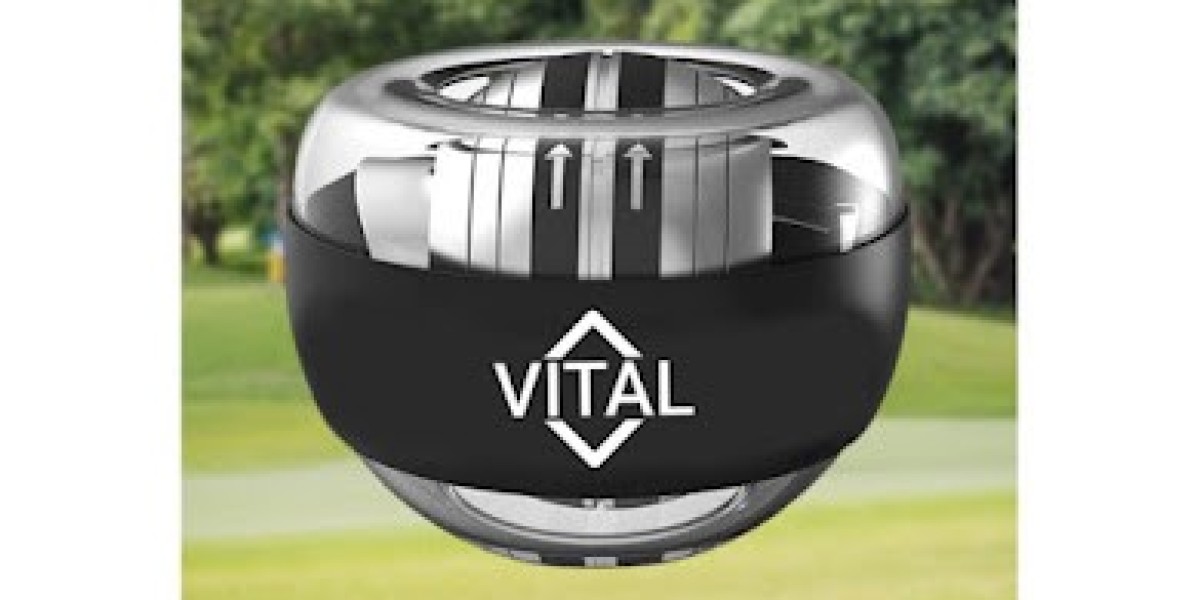Providing your cat with a balanced diet is one of the most important responsibilities of pet ownership. Just like humans, cats require specific nutrients in the right proportions to maintain optimal health, energy levels, and longevity. However, with countless cat food options available and conflicting advice from various sources, many cat owners find themselves confused about what truly constitutes a proper feline diet. Cats are obligate carnivores with unique dietary requirements that differ significantly from dogs and other pets, making it essential to understand their specific nutritional needs. From selecting high-quality food and establishing consistent feeding routines to recognizing signs of good health and addressing potential dietary issues, every aspect of your cat's nutrition plays a vital role in their overall well-being. This comprehensive guide will walk you through the fundamental principles of feline nutrition, helping you make informed decisions that will keep your cat healthy, happy, and thriving for years to come.
Understanding a Cat's Nutritional Needs
Cats have evolved as strict carnivores, meaning their bodies are designed to derive nutrition primarily from animal tissue. Unlike omnivores, they cannot synthesize certain essential nutrients on their own and must obtain them directly from their food. Taurine, an amino acid critical for heart function, vision, and reproduction, is found naturally only in animal proteins. Without adequate taurine, cats can develop serious health conditions including dilated cardiomyopathy and retinal degeneration. Additionally, cats require preformed vitamin A from animal sources rather than converting it from beta-carotene like other animals can. Their protein needs are significantly higher than most other pets, typically requiring at least 26% protein in adult maintenance diets and up to 30% for growing kittens. Cats also need arachidonic acid, a fatty acid they cannot produce themselves, which supports skin health, coat quality, and proper kidney function. Understanding these unique requirements helps explain why feeding cats a vegetarian diet or dog food can lead to severe nutritional deficiencies. The biological makeup of cats demands that their diet closely mimics what they would consume in the wild, which consists predominantly of small prey animals that provide complete nutrition in the right proportions.

Protein Requirements
High-quality animal protein should form the foundation of every cat's diet, serving as the primary source of energy and essential amino acids. Adult cats need a minimum of 26% protein in their daily food intake, while kittens, pregnant cats, and nursing mothers require even higher levels, around 30-35%, to support growth and development. The protein source matters significantly—chicken, turkey, fish, beef, and lamb provide complete amino acid profiles that cats can easily digest and utilize. When evaluating cat food, look for named meat sources listed as the first ingredient rather than generic terms like "meat meal" or "animal by-products." Cats metabolize protein differently than dogs or humans, using it not just for building and repairing tissues but also as a primary energy source. This metabolic difference means that even when calories are adequate, insufficient protein can lead to muscle wasting and weakened immune function over time.
Essential Fats and Carbohydrates
While protein takes center stage in feline nutrition, fats play equally important supporting roles in maintaining your cat's health. Essential fatty acids, particularly omega-3 and omega-6, support brain function, reduce inflammation, and promote healthy skin and a lustrous coat. Cats specifically need arachidonic acid, an omega-6 fatty acid found only in animal fats, making fish oil and chicken fat valuable dietary components. Fat content should typically range between 9-15% for adult cats, providing concentrated energy and helping absorb fat-soluble vitamins A, D, E, and K. Regarding carbohydrates, cats have minimal nutritional requirements since they've evolved to obtain energy from protein and fat. Their bodies produce only small amounts of amylase, the enzyme needed to break down starches. While small amounts of digestible carbohydrates won't harm most cats, excessive carbs from grains, potatoes, or peas can contribute to obesity and diabetes, particularly in sedentary indoor cats.
Choosing the Right High-Quality Cat Food
Navigating the pet food aisle can feel overwhelming given the sheer number of options claiming to be premium, natural, or specially formulated. The key to selecting quality cat food lies in understanding what separates genuinely nutritious products from clever marketing. Start by examining whether the food meets AAFCO (Association of American Feed Control Officials) standards, indicated by a statement on the package confirming it provides complete and balanced nutrition for your cat's life stage. Wet food generally offers advantages over dry kibble, including higher moisture content that supports kidney and urinary tract health, fewer carbohydrates, and protein concentrations closer to a cat's natural diet. However, high-quality dry foods can work well when supplemented with adequate water intake. Consider your cat's age, health status, and activity level when choosing between kitten, adult, or senior formulations, as each addresses different nutritional demands. Cats with specific health conditions like kidney disease, diabetes, or food sensitivities may benefit from prescription diets recommended by your veterinarian. Price often correlates with quality since premium ingredients cost more than fillers, but expensive doesn't automatically mean better. Focus on nutritional content rather than packaging claims, and remember that what works perfectly for one cat might not suit another due to individual preferences and digestive tolerances.
Reading Labels
Ingredient lists reveal the truth about what's actually in your cat's food, with items listed in descending order by weight before cooking. The first three to five ingredients matter most since they comprise the bulk of the product. Look for specific named proteins like "chicken," "salmon," or "turkey" rather than vague terms like "poultry" or "fish." Meat, poultry, or fish should appear as the first ingredient, ideally followed by additional protein sources. Be aware that "meal" ingredients like chicken meal are actually more protein-concentrated than whole chicken since moisture has been removed, making them valuable when listed early. Check the guaranteed analysis section for minimum protein and fat percentages alongside maximum fiber and moisture levels. Quality foods typically show protein levels above 30% for dry food and 8-10% for wet food (accounting for moisture differences). Avoid foods listing corn, wheat, or soy as primary ingredients, and be cautious of artificial colors, flavors, or preservatives like BHA, BHT, or ethoxyquin, opting instead for natural preservatives like mixed tocopherols (vitamin E).
Avoiding Fillers and By-Products
Fillers are inexpensive ingredients that bulk up food without providing meaningful nutrition for obligate carnivores. Common fillers include corn gluten meal, wheat middlings, rice hulls, and cellulose, which serve primarily to reduce manufacturing costs while adding carbohydrates cats don't need. While small amounts of digestible grains won't harm healthy cats, they shouldn't dominate the ingredient list. The term "by-products" generates considerable debate in pet nutrition circles. Meat by-products can include nutritious organ meats like liver and kidneys that cats would naturally consume, but the lack of specificity means they might also contain less desirable parts with minimal nutritional value. Named by-products like "chicken by-products" offer more transparency than generic "meat by-products" or "animal digest." Higher-quality foods typically specify exactly which organs are included, such as "chicken liver" or "turkey heart." Watch for splitting tactics where manufacturers list the same ingredient in different forms—like corn, corn gluten, and corn meal—to push each lower on the ingredient list while corn still comprises a large portion of the food. Ultimately, foods with clearly identified, whole-food ingredients provide the most reliable nutrition for your cat.
Creating a Feeding Schedule
Establishing a consistent feeding routine provides structure that benefits both cats and their owners while supporting healthy digestion and weight management. Most adult cats thrive on two meals per day spaced approximately 8-12 hours apart, typically morning and evening, which aligns with their natural hunting patterns and prevents the blood sugar fluctuations that can occur with once-daily feeding. Kittens under six months need more frequent meals—three to four times daily—to fuel their rapid growth and higher metabolic rates. Free-feeding, where food remains available all day, works for some cats with good self-control but often leads to overeating and obesity in others, particularly with the palatability of modern cat foods that encourages overconsumption. Scheduled meal times allow you to monitor your cat's appetite closely, making it easier to notice when they're eating less, which can be an early warning sign of illness. Portion control becomes simpler with set mealtimes, as you can measure exact amounts rather than guessing how much your cat consumed from a constantly refilled bowl. Wet food requires scheduled feeding since it spoils quickly at room temperature, while dry food offers more flexibility though scheduled feeding remains preferable. The transition to a feeding schedule should happen gradually if your cat is accustomed to free-feeding, reducing available food time incrementally over one to two weeks to minimize stress and resistance.
Daily Feeding Guidelines
The amount of food your cat needs depends on several factors including age, weight, activity level, and whether you're feeding wet food, dry food, or a combination. Most cat food packages provide feeding guidelines based on weight, but these serve as starting points rather than absolute rules since individual metabolisms vary considerably. An average 10-pound adult cat typically needs around 200-250 calories daily, which translates to roughly half a cup of dry food or one 5.5-ounce can of wet food. If combining both types, reduce each proportionally—for example, quarter cup of dry food plus half a can of wet food. Measure portions using a standard measuring cup or kitchen scale rather than estimating, as even small daily overfeeding accumulates into significant weight gain over months. Divide the total daily amount between meals rather than offering it all at once to maintain steady energy and prevent gorging followed by vomiting. Many pet owners find that using dedicated feeding accessories from brands like PetCoolGo helps maintain consistent portion sizes and feeding schedules, making it easier to track their cat's daily intake accurately.
Adjusting for Activity Levels
Active cats burn more calories and require larger portions than sedentary companions, making activity level a crucial consideration in determining appropriate food quantities. Indoor cats typically need 20-30% fewer calories than outdoor cats who climb, hunt, and patrol territories throughout the day. Young adult cats between one and seven years old generally have higher energy needs than seniors whose metabolism slows with age. Intact cats require more calories than spayed or neutered cats due to hormonal differences affecting metabolism. Monitor your cat's body condition by feeling their ribs—you should be able to feel them easily without pressing hard, but they shouldn't be visibly protruding. Adjust portions by 10% increments every two weeks based on weight changes rather than making drastic cuts or increases that can stress your cat's system. Cats recovering from illness, pregnant, or nursing need substantially more calories, sometimes double their normal intake, and should be fed according to veterinary recommendations specific to their situation.
Monitoring Your Cat's Health
Regular observation of your cat's physical condition and behavior provides invaluable insights into whether their diet is meeting their nutritional needs effectively. A well-nourished cat displays visible signs of vitality that extend far beyond simply finishing their meals. Weight monitoring should happen monthly using a home scale or during veterinary visits, with any gain or loss exceeding 10% of body weight warranting dietary adjustments or medical consultation. Pay attention to litter box habits since changes in urination frequency, stool consistency, or straining can indicate dietary issues ranging from insufficient hydration to food sensitivities. Energy levels offer another important health indicator—while cats naturally sleep 12-16 hours daily, sudden lethargy or hyperactivity may signal nutritional imbalances or underlying health problems. Regular grooming behavior demonstrates that your cat feels well enough to maintain their coat, whereas neglected fur or excessive grooming can point to discomfort related to diet. Schedule annual veterinary checkups that include bloodwork to catch potential issues like kidney disease or diabetes early, when dietary modifications can make the most significant impact. Keep a simple journal noting any changes in eating patterns, water consumption, weight, or behavior, as patterns emerging over weeks provide your veterinarian with crucial diagnostic information. Remember that cats instinctively hide illness as a survival mechanism, making proactive monitoring essential since by the time symptoms become obvious, conditions may already be advanced.
Signs of Proper Nutrition
A healthy, well-fed cat exhibits several unmistakable physical characteristics that confirm their diet is working. Their coat should appear glossy and smooth without excessive shedding, dandruff, or bald patches, reflecting adequate protein and essential fatty acid intake. Bright, clear eyes free from discharge indicate good overall health and proper vitamin A levels. Healthy gums appear pink rather than pale or inflamed, and teeth remain relatively clean without excessive tartar buildup, though some accumulation naturally occurs with age. Your cat should maintain consistent energy appropriate to their age—playful curiosity in younger cats and calm alertness in seniors. Firm, well-formed stools that aren't overly hard or persistently loose demonstrate proper digestion and nutrient absorption. A healthy appetite with enthusiasm at mealtimes without obsessive food-seeking behavior between meals suggests their nutritional needs are being satisfied.
Addressing Health Issues
When dietary problems arise, prompt recognition and response prevent minor issues from becoming serious health conditions. Persistent vomiting beyond occasional hairballs, especially if it contains undigested food, may indicate eating too quickly, food allergies, or underlying illness requiring veterinary attention. Gradual weight loss despite normal eating often signals metabolic disorders like hyperthyroidism or diabetes that need medical diagnosis and specialized dietary management. Conversely, steady weight gain necessitates portion reduction and possibly switching to a weight management formula with higher protein and lower calories. Chronic diarrhea or constipation lasting more than two days warrants dietary evaluation and potentially switching to limited ingredient or prescription foods that address digestive sensitivities. Increased thirst and urination can indicate kidney disease or diabetes, conditions where therapeutic diets become essential treatment components. If your cat suddenly refuses food for more than 24 hours, contact your veterinarian immediately, as cats can develop hepatic lipidosis, a dangerous liver condition, when they stop eating for just a few days.
Building a Lifetime of Feline Health Through Nutrition
Feeding your cat a balanced diet requires thoughtful attention to their unique biological needs as obligate carnivores, but the effort pays dividends in their health, happiness, and longevity. By prioritizing high-quality animal proteins, ensuring adequate essential fatty acids, and minimizing unnecessary fillers and carbohydrates, you provide the nutritional foundation your cat needs to thrive. Establishing consistent feeding schedules with appropriate portions tailored to your cat's age, weight, and activity level prevents obesity while allowing you to monitor their appetite for early signs of health changes. Reading ingredient labels critically and choosing foods that meet AAFCO standards ensures you're offering complete nutrition rather than falling for marketing claims. Regular monitoring of your cat's coat quality, energy levels, weight, and litter box habits helps you recognize when dietary adjustments might be necessary. Remember that every cat is an individual with unique preferences and tolerances, so what works perfectly for one may need modification for another. When in doubt, consult your veterinarian, who can provide personalized recommendations based on your cat's specific health status and nutritional requirements. With the knowledge you've gained from this guide, you're now equipped to make informed decisions that will keep your feline companion healthy and content for many years to come.


